
About the author
Table of contents
One of the first tasks you’ll want to tackle with your shiny new WordPress website is to create a page. Whether you built your own WordPress website, signed up for one on WordPress.com or had one custom-built for you by a professional, creating pages will be one of your primary tasks. Naturally, you’ll also want to add it to your navigation menus so your visitors can find it.
This tutorial will teach you the basics of how to create a WordPress page and how to add it to your website’s navigation menu. The length of the post may make the process seem daunting, but it’s really not that difficult. Once you do it a few times, you’ll get the hang of it.
Get Started
The first thing you’ll want to do is log in to your WordPress website’s admin area. Once you have done that, click on the “Pages” menu item in the left navigation menu. This will take you to a list of all your pages.
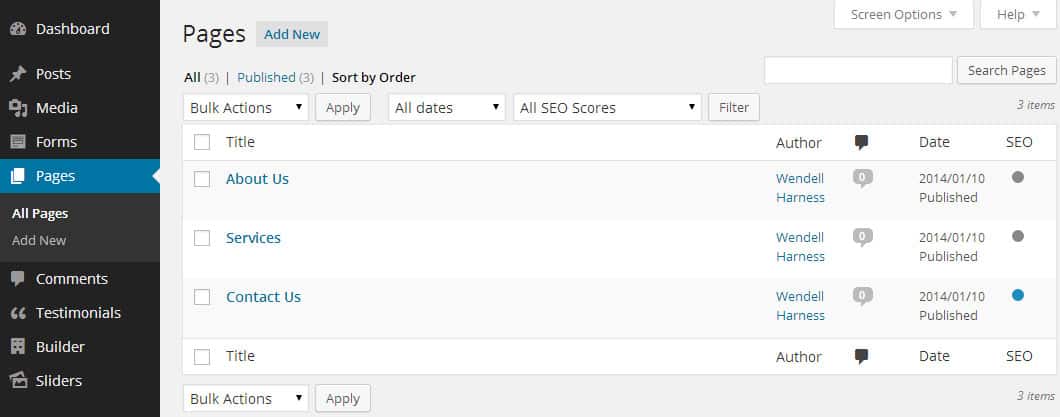
Create A WordPress Page
Click the “Add New” button at the top of the page. This will take you to the Add New Page page, which has the WordPress editor and all the settings for your new page.
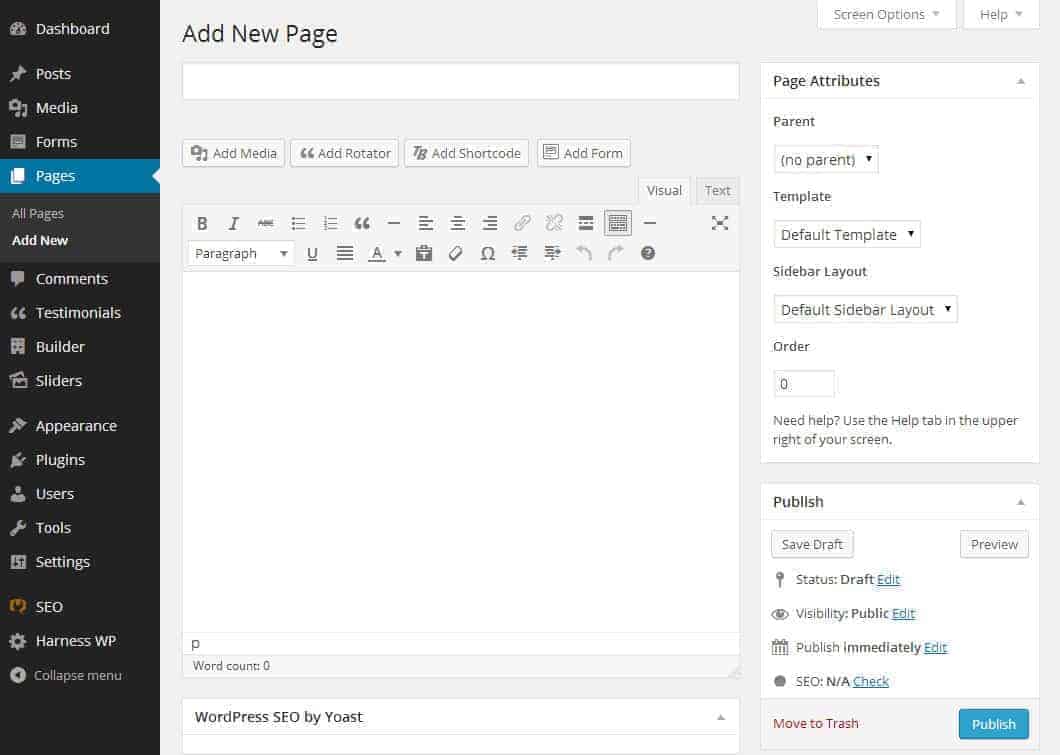
In the top box, you’ll enter the title of your new page. The editor area is where you’ll enter the text of your page and insert images. As you are filling out the various fields for your new page, at some point you’ll notice that a permalink field will appear directly under the title. A permalink is often called a “slug” and basically is the address or URL of the page you are creating. WordPress automatically determines the permalink based on the title you entered. If you don’t like the permalink WordPress creates, you can click the Edit button next to it and change it to something more suitable.

Once you have configured the appropriate fields for your page, click the blue Publish button. This makes the page live to the public, but may or may not show up in your navigation menu, depending on how the menu is now configured (more later). You can also click the Save Draft button to save the page for later; in this state, the page is not visible to the public.
Navigation Conundrum
Now that you have a shiny new page, how can your visitors read it? Whether or not the page shows up automatically in your navigation menu depends largely on how your theme is set up or if it supports WordPress’ built-in menu system.
If your theme does not support WordPress Menus, then your published page is likely already shown in your navigation menu by default. This would also be the case if your theme supports WordPress Menus, but doesn’t have any menus assigned to it yet.
The easiest way to check for proper configuration of your theme for WordPress Menus is to simply see if the new page has been added by visiting the home page. If not, then you either need to configure a menu for your theme (most likely) or your theme does not support WordPress Menus.
Adding The Page To Your Navigation Menu
From the WordPress admin area, hover on the Appearance menu item in the left menu, then click on Menus. If there are no menus yet, you’ll need to create one using the link provided. One of the menus will be shown by default if any already exist.
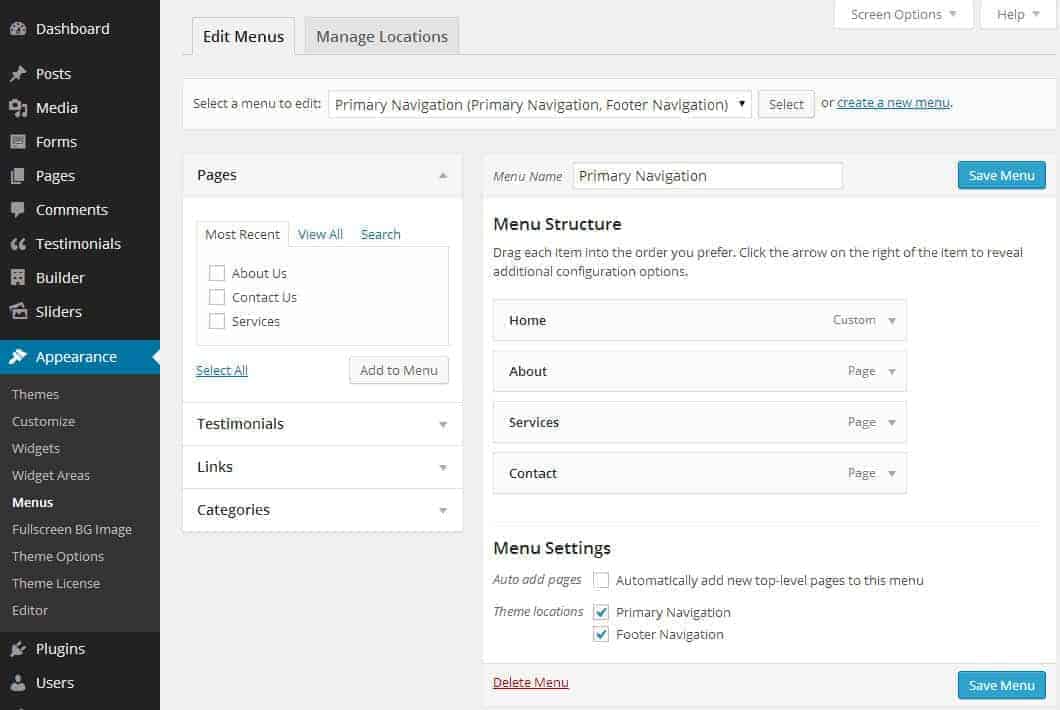
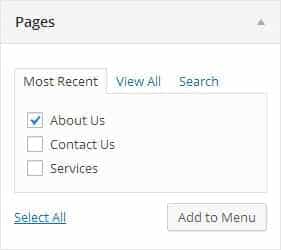
Once you have selected or created a menu, you’ll need to add your new page to it. The left sidebar has all the possible areas where you can add menu items. By default, it will show you a list of the most recently created pages. The first one listed should be your new page. To add it to the menu, check the box next to it and click the Add to Menu button.
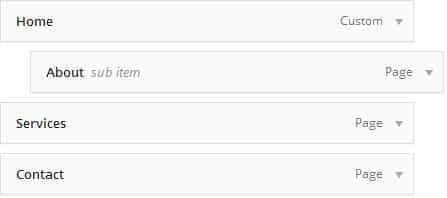
You’ll see that it is added to the bottom of the list in the right pane. Now you can click and drag that page to the place in the menu where you’d like it to appear. Note that you can make it a child of any other menu item simply by dragging it under the parent menu item and a little to the right.
Once you have the menu setup the way you want it, be sure to check the appropriate boxes in the Theme Locations section. This assigns the menu to specific locations in your theme. For more information about where the menus are located in your theme, you’ll need to consult with your theme’s documentation or support team.
Click the blue Save Menu button to save your menu. Now you can visit your home page as visitors would see it to make sure that the menu looks they way you want it to.



